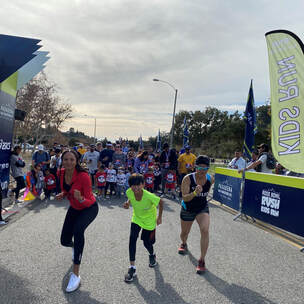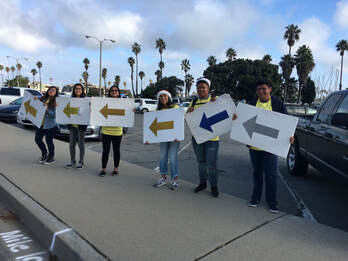|
Back to Blog
Kids Runs Volunteers5/24/2021 Just like any other area of your event, volunteers are essential for a safe and smooth Kids Run. Below are the roles that I have found the most useful when planning to manage a Kids Run COORDINATOR – the first and most central appointment you make for the Kids Run is someone to manage it. Ideally this should be a staff person or other key volunteer (board member, long-time volunteer, or community leader) who is familiar to your organization and has no other overlapping commitments on race day. This role requires someone who works well under pressure, is able to make quick decisions, can be assertive and possesses good management skills, can spot and react quickly to safety hazards, and is well versed on the event as a whole including the expo layout, main event course, security/medical services, chain of command, etc. *This is the role that is typically held by Run Kids Run staff and begins months before event day.  LEAD RUNNER/CYCLIST – This person (or people if you expect a big group of kids) should be fast enough to stay ahead of the children and lead them along the course. Choose an experienced runner for this role because kids are FAST and they will easily overtake inexperienced runners. A great place to recruit a lead runner is your local run club or high school track team. In case you can’t find a fast runner, recruit a cyclist to stay ahead of the kids (make sure s/he wears a helmet – they are role models) or even a local police officer on a motorcycle. Make sure your “rabbit” arrives early so they can learn the course, warm up, and be properly introduced at the start line. It’s a good idea to give the pacer a “head start” – meaning they start about 10-15 ft ahead of the start line - and remind the kids to stay behind him/her. Local track teams or sponsors can be invited to wear branded apparel but make sure it’s distinct and easy for the kids to spot – you want your lead runner to stand out from the crowd. SWEEP – this is another important person at your event. The sweep stays behind the very last participant (this is often a 2 year old toddling along!) When your sweep passes the volunteers and crosses the finish line, they signify the end of the pack. This is a great role for a mascot, sponsor, or other “colorful” person who prefers to walk in the back. START/FINISH LINE VOLUNTEERS – You’ll need a few people to help manage the start line. Families will begin lining up early so volunteers can help keep them entertained or at least keep them behind the start line. These volunteers can later help with ribbons/medals and water at the finish line. They should be in place when the kids start lining up and should stay in place until the sweep comes through. COURSE MARSHALS– these volunteers are stationed along the course, at turns or potential “hot spots” - like side streets where children might accidentally make a wrong turn; at active driveways or alleys where cars may appear; at trip hazards like curbs, major pot holes and cracks; and where children potentially merge with main event runners/walkers. Course marshals should be scheduled to arrive 45 minutes to an hour before the Kids Run start. This gives you plenty of time to walk them all through the course as a group, assign positions, and talk about their roles/responsibilities. An hour may seem like a long time before the start but maneuvering a group of volunteers (who are likely not runners) takes time, and the Kids Run leader needs to be back in time for warm ups and other volunteer placements. Volunteers should wear clothing that identifies them as a course official (volunteer tshirts are fine) and can be given signs and noise makers to make them more festive. They should be instructed to be in place and ready for the kids run start at least 15 minutes before the start. They should stay there until the sweep passes them. They should also be instructed on what to do if a child gets injured or is having trouble on the course. Lastly, remind them to ditch their headphones and avoid phones during the event.  SOME FINAL THOUGHTS: Designate your volunteers with clothing or other distinguishable gear. By identifying your volunteers, children and parents will be able to ask for help from the right people. Ask if your volunteers have experience with kids! Volunteers are people who want to help out or get school credit and many don’t like kids! If someone doesn’t like kids, send them elsewhere or give them a low-contact job like stocking the water table. You want people who are enthusiastic on the course and who can also help a child if they are having trouble. Find out if any of your volunteers have childcare, teaching, or babysitting experience – you can use them for the high-contact roles like managing the start line or more complex course sections that require crowd control. DO NOT PUT ANY VOLUNTEERS INTO A DECISION-MAKING ROLE unless you are absolutely certain they can handle it.
0 Comments
Read More
Leave a Reply. |
 RSS Feed
RSS Feed